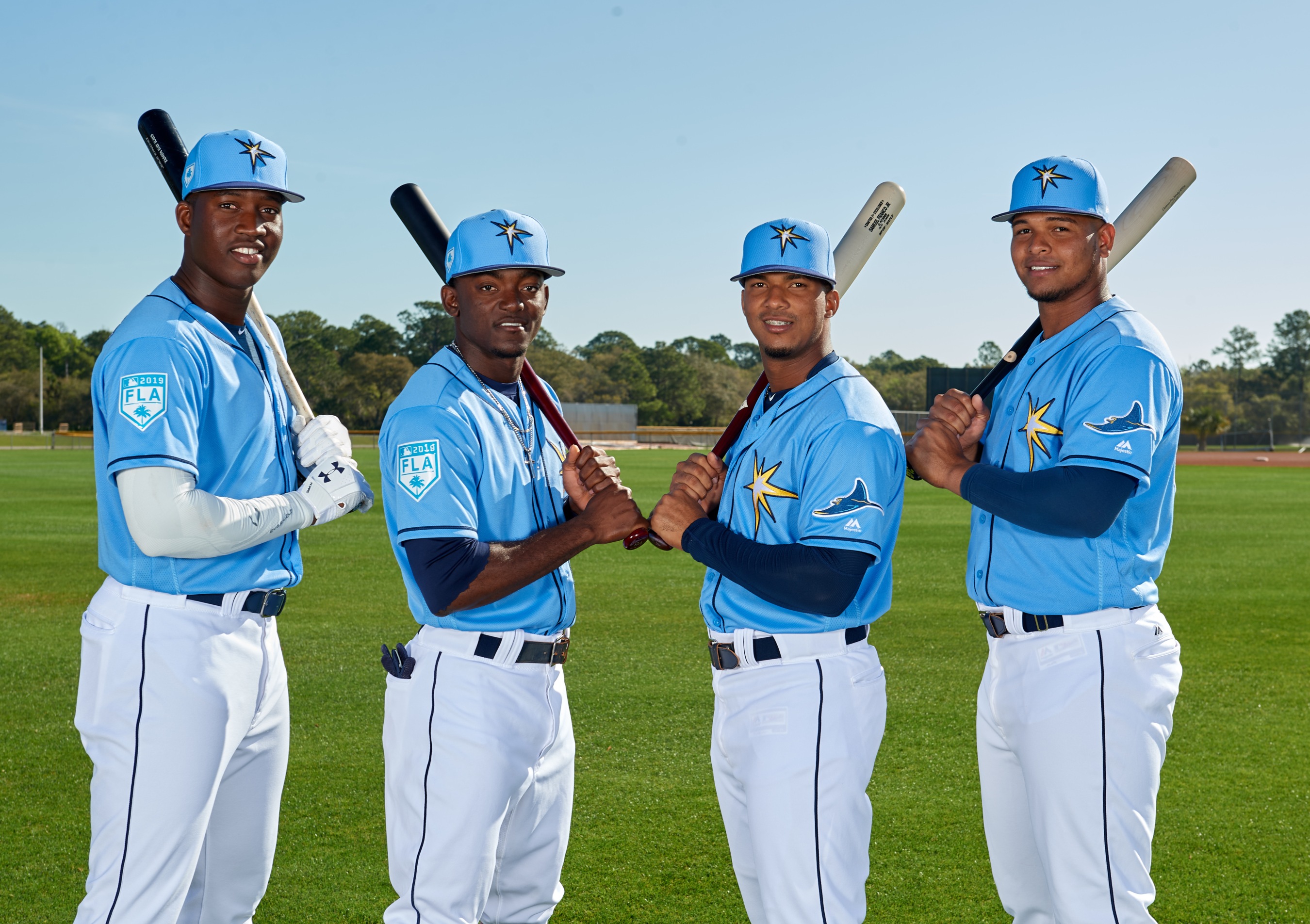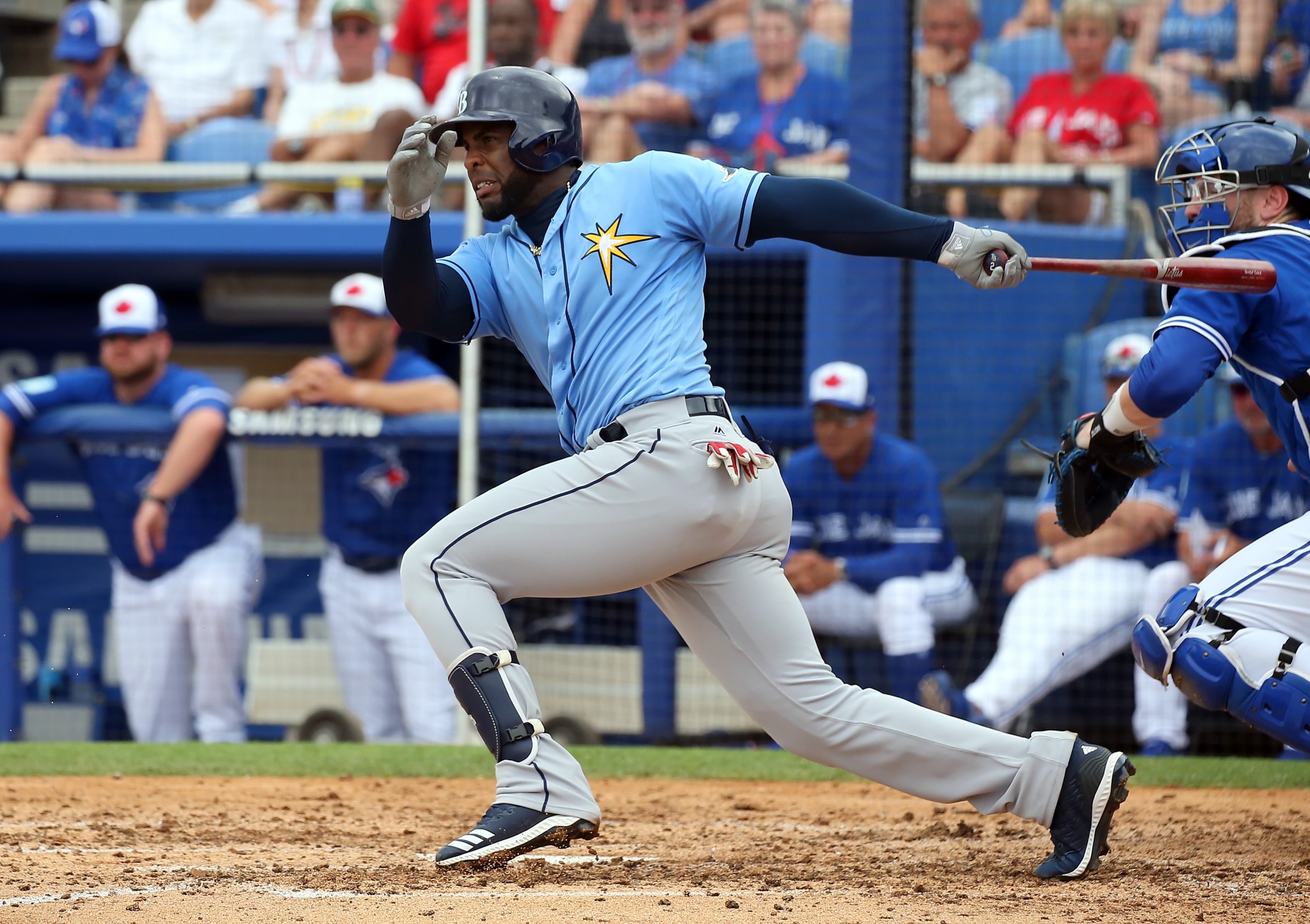New Rays Rising: How Tampa Bay Returned To Its Roots


Image credit: (Photo by Mike Janes)
In many ways, the Rays situation has never been more hopeless.
Stadium situation? Dire.
The new stadium in Tampa’s Ybor City that was supposed to provide an escape from Tropicana Field is dead. There currently are no concrete plans for the Rays to go anywhere before the club’s lease at Tropicana Field ends in 2027. The stadium is considered one of the two worst in Major League Baseball, rivaled only by the Athletics’ Oakland-Alameda County Stadium.
Payroll? Rock bottom.
The Rays are the only team in baseball never to top $100 million for an Opening Day payroll. In a division where the Red Sox and Yankees regularly pay the luxury tax (set this year to kick in at $206 million), the Rays consistently have stayed more than $100 million under the tax.
Fan support? Meager.
This year the Rays have decided to close the entire upper level of Tropicana Field, cutting seating capacity to 25,000, which is the smallest in MLB since the Angels played the 1961 season at Los Angeles’ Wrigley Field. The extra seats won’t really be missed—the Rays drew more than 20,000 just nine times last season. They also had nine home dates where they failed to draw 10,000 fans.
But at the same time, the Rays have more reasons to be optimistic now than they have in years.
The big league club? Promising.
There is a young, talented core. Lefthander Blake Snell is the reigning Cy Young Award winner. Shortstop Willy Adames has quickly established himself as a potential cornerstone. Jose Alvardo, Diego Castillo and Ryne Stanek are talented young arms in a deep bullpen. Between Joey Wendle, Brandon Lowe, Daniel Robertson, Matt Duffy and Yandy Diaz, the Rays have a large number of hitters who are comfortable playing a wide range of positions. And this is a group that won 90 games last year.
The farm system? Stacked.
Tampa Bay currently has nine Top 100 Prospects, tying this year’s Padres and the 2011 Royals as the only teams with nine Top 100 Prospects in the same season. The Rays’ system is deep enough that two of the club’s three first-round picks from 2018 rank outside the organization’s Top 10 Prospects.
“We have more depth now than any year,” Rays farm director Mitch Lukevics said, “and I’ve been here for every one of them . . . We have more good players (in the minors) than ever before.”
The future? Actually bright.
A trip around Rays camp in Port Charlotte, Fla., instills plenty of optimism. As dire as the team’s situation seems off the field, on the field the team is in the best shape it’s been since a young, talented core took the team to the World Series in 2008 and earned three more playoff appearances over the next five seasons.
The Rays are still innovative. The club’s use of the opener last season helped a team racked by injuries to starting pitchers post the league’s second best ERA and set the model that other team’s quickly followed. The player development staff remains excellent.
But there is another explanation for why the Rays are a legitimate playoff contender again. They spend a lot of resources on scouting and they do an excellent job of it.

The Rays do not spend to sign significant major league free agents. So for the club to have success it needs to make astute trades and it relies on cultivating a steady stream of young talent through the draft and international market.
The Rays mastered the art of tanking without ever trying to tank. Long before the Astros rode rock-bottom records and the resulting top draft picks to big league success, the Rays were the worst team in baseball year after year. And they reaped the draft benefits that came with it. From 1998 to 2007, the Rays never won more than 70 games. Over that time they picked first four different times, second once and third twice.
They didn’t hit on all those picks, but David Price, Evan Longoria and B.J. Upton played large roles in the club’s playoff success. The Rays drafting tailed off right around the time that the club found its first big league success. In large part, that was because the team stopped drafting high—since that World Series appearance the club has picked in the top 10 only once.
The Rays have found Snell and outfielder Kevin Kiermaier in the draft since then, but of the Rays’ 11 first-round picks from 2009 to 2015, Ryne Stanek is the only one who has made an appreciable impact for the Rays.
There are signs that the club’s drafting is picking up. Of the Rays’ nine Top 100 Prospects from 2013 to 2015, only one was drafted by the Rays. This year, the Rays have five draftees in the Top 100.
But even more importantly, the Rays are finding plenty of success on the international amateur market, something that has been missing throughout the franchise’s history.
While the Rays can’t compete with the Yankees and Red Sox to sign Price, Aroldis Chapman or J.D. Martinez on the free agent market, they can match them dollar for dollar on July 2. But until recently, the Rays consistently struck out on July 2.
When the Rays made Carlos Rodriguez the team’s international scouting director in 2012, he was taking over a department that had been a nearly complete non-factor in the team’s fortunes. Infielders Jorge Cantu and Juniel Querecuto are the only two position players whom the Rays signed on the international amateur market to ever make it to Tampa Bay. Neither made an impact.
Until recently, the return on pitching had not been much better. Tampa Bay had just five of its own international amateur signees pitch for the team from 1998 to 2017, and Dominican righthander Alex Colome was the only true success story.
“You go back 10-plus years and the organization didn’t really have an international program,” Rays vice president of baseball operations Chaim Bloom said. “It’s been built up in a sense and now seems to be hitting another gear.”
When Rodriguez took over, he was charged with making a difference in a department that hadn’t.
“I got an earful from the guys when I came on that we need to be productive in this arena, especially where we are at,” Rodriguez said. “Ownership has been tremendous and supportive about this and providing all the support that we need. They’ve let us really be aggressive with trying to build out the department, add people.
“Over time, scratching and clawing, we’re fortunate to look up years later and see where we’re at.”
Rodriguez is now in charge of a 30-person scouting staff, which is roughly equivalent in size to the Rays’ domestic scouting department. When Rodriguez started, he didn’t have any international crosscheckers. Now Steve Miller and Brad Brudzinski fill that role. Ronnie Blanco is now the director of South American scouting. Danny Santana supervises five scouts in the Dominican Republic, and the team now has scouts in 11 different countries. As Rodriguez put it, their scouting area is “the Earth.”
“One of the most exciting things about the international market is we wake up everyday feeling that today we can run into a big leaguer,” Rodriguez said. “It requires outstanding area scouts.”
The Rays have spent big internationally, which did not pay off when Dominican shortstop Adrian Rondon received $2.95 million in 2014, but is paying off massively in the case of Wander Franco’s $3.8 million bonus from 2017. That seems modest considering how quickly he became one of the top prospects in baseball.
But the club has also done an excellent job recently of signing mid-level international prospects. For instance, Dominican outfielder Jesus Sanchez signed for $400,000 in 2014. And they have found low-cost gems. Reliever Diego Castillo was a $64,000 signing. Yonny Chirinos was a $10,000 find and Vidal Brujan signed for $15,000.
Rays scouts know that finding emerging talent like righthander Shane Baz, whom they scouted at Rookie-level Bristol, is the lifeblood of the organization.

The Rays have gotten better at drafting. They’ve started to successfully mine the international market. But the team’s excellent pro scouting has been a given for many years.
The Rays’ scouts and front office have continually pulled off a long-running high-wire act. Players are acquired as minor leaguers, developed by the Rays, reach the majors, have success and then are traded for young prospects who are expected to repeat the process. From 2013 to 2017, 13 of the Rays’ 18 Top 100 Prospects were players they acquired by trade.
The Rays traded ace James Shields for four prospects, including Wil Myers and future major leaguers Jake Odorizzi and Mike Montgomery. Myers became the American League Rookie of the Year for the Rays. Myers was then dealt to the Padres in a trade that brought minor leaguers Jake Bauers and Steven Souza to Tampa Bay. Both of them made it to Tampa Bay before being traded themselves, as the cycle continues.
“I think we all realize we do compete in the big-boy division,” Rays director of pro scouting Kevin Ibach said. “The lifeblood of the Rays has always been our farm system. The day we start running out of those prospects, we’re not going to be able to go out and buy them on the free agent market.”
Adames, the team’s current shortstop, was acquired in the David Price trade in 2014 when he was just a few months into his first season playing in the U.S. He had been the Tigers’ No. 30 prospect the previous year when playing in the Dominican Summer League. By the end of the 2014 season he was the Rays’ No. 1 prospect, but he was still four years away from the majors.
“I think our challenge is to find Willy Adames when he’s in the Midwest League at a juncture of his career where he’s accessible where he might not be six months later,” Ibach said.
That’s been a continual theme of the Rays’ trades. They try to get minor league players on the rise before their values have caught up to their ability.
“We have a lot of technology that will tell you what the player is today, right now in this moment,” Ibach said. “That’s great, but the grassroots of scouting is the projection component. As the body changes, as the player matures, as our coaches help bring out those ingredients, we can get players who aren’t publicly famous or maybe have not hit their peak yet.”
There are also cases like last year’s Chris Archer trade with the Pirates, in which the Rays acquire players whose value has dipped a little from its peak. A year earlier righthander Tyler Glasnow and outfielder Austin Meadows likely would not have been available, but Glasnow’s continued control troubles and Meadows’ injury issues had lowered their trade values.
That trade also illustrated another aspect of the Rays’ scouting. No one had expected the Pirates to be one of the teams involved in an Archer trade, and the deal came together quickly. But Tampa Bay had plenty of coverage of all three players the Rays acquired—righty Shane Baz was the third—because of the way the club covers the minors with a large scouting staff.
“Our scouts operate with very little to no ego,” Ibach said. “If I ask a scout to go to Bristol (the Pirates’ affiliate in the Rookie-level Appalachian League), there is no eye rolling because they know it’s the foundation of how we operate.”
There are zero guarantees that it will be enough. Even a system loaded with prospects and a solid big league roster is going to struggle to catch the Red Sox and Yankees. But the Rays once again have a chance.
They’ve done it before. And now they have the farm system to possibly do it again.

Comments are closed.